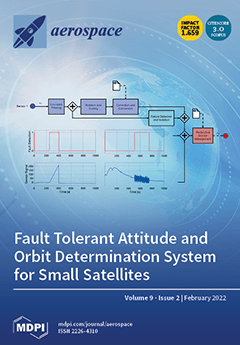In this study, numerical simulations were carried out to investigate the flow and heat transfer characteristics of jet array impingement cooling in the quasi-leading-edge channel of gas turbine blades. The influence laws of Reynolds number (
Re, 10,000 to 50,000), hole diameter-to-impingement
[...] Read more.
In this study, numerical simulations were carried out to investigate the flow and heat transfer characteristics of jet array impingement cooling in the quasi-leading-edge channel of gas turbine blades. The influence laws of Reynolds number (
Re, 10,000 to 50,000), hole diameter-to-impingement spacing ratio (
d/H, 0.5 to 0.9), hole spacing-to-impingement spacing ratio (
S/H, 2 to 6), and Prandtl number (
Pr, 0.690 to 0.968) on flow performance, heat transfer performance, and comprehensive thermal performance were examined, and the corresponding empirical correlations were fitted. The results show that increasing the
d/H and reducing the
S/H can effectively reduce the pressure loss coefficient in the quasi-leading-edge channel. Increasing the
Re, reducing the
d/H, and increasing the
S/H can effectively enhance the heat transfer effect of the target wall. When
d/H = 0.6 at lower Reynolds numbers and
S/H = 5 at higher Reynolds numbers, the comprehensive thermodynamic coefficient reaches its maximum values. The average Nusselt numbers and comprehensive thermal coefficients of the quasi-leading-edge channel for steam cooling are both higher than those for air cooling. The pressure loss coefficient of the quasi-leading-edge channel is most sensitive to the change in
d/H but is not sensitive to the change in
Re. The average Nusselt number of the quasi-leading-edge channel is most sensitive to the change in
Re and is least sensitive to the change in
Pr. The comprehensive thermal coefficient of the quasi-leading-edge channel is most sensitive to the change in
Re. The findings may provide a reference for the design of a steam-cooling structure in the leading edge channel of high-temperature turbine blades.
Full article





